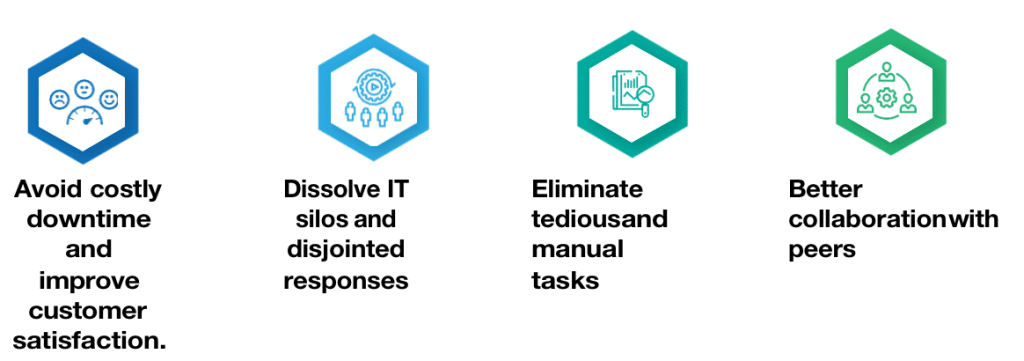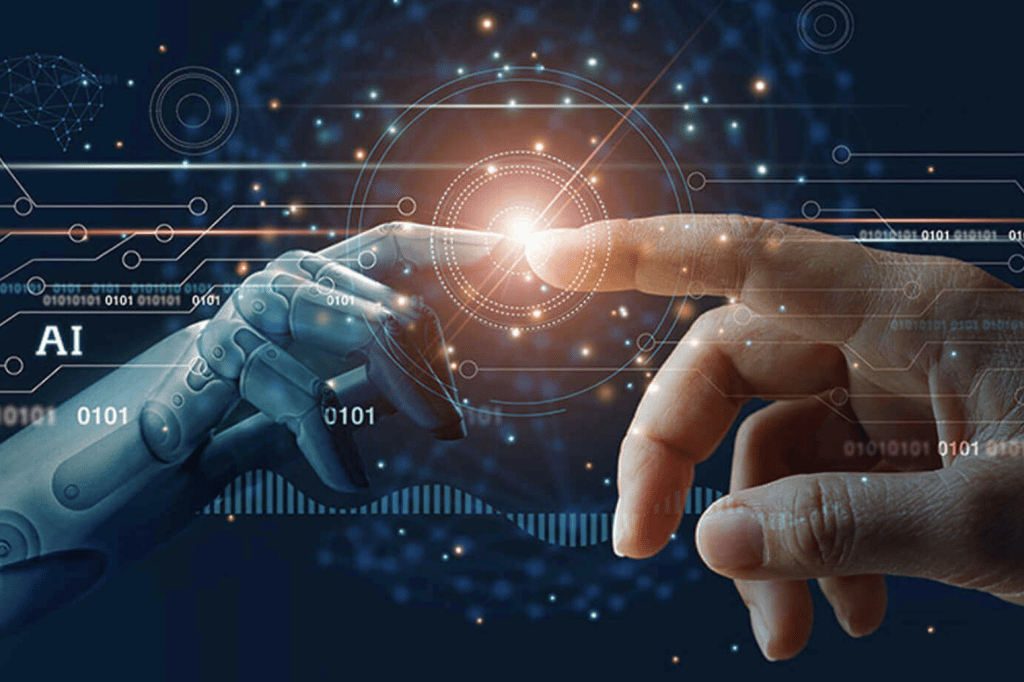From healthcare to tourism to entertainment, Artificial Intelligence (AI) has been a part of every other industry. The global AI market is expected to be worth about 126 billion U.S. dollars by the year 2025(Source – Statista). Currently, it is one of the fastest-developing markets in the world. Meanwhile, the Cloud business has also transformed from its initial hype to a widespread option for many industries. The public Cloud industry is supposed to be worth $1,251.09 billion by 2028(Source – Grand View Research Inc.)
The present AI capabilities depend highly on Cloud computing and tremendous stores of premium data. With Cloud computing, companies worldwide can gather, store, process, and break down large amounts of data. Many companies have already established the AI and Cloud combination to flourish in their businesses and undertakings.
Though the AI industry prospered with the growth of Cloud computing, investment in AI is what drives the Cloud business forward now. Cloud computing utilizing AI is a transformative change that has been a flawless integration of the existing frameworks.
By investing in AI, public Cloud providers are attracting customers to their platforms. Although still evolving in the public Cloud, AI is turning out to be an essential driver for the adoption of computing and data services.
The Growing Significance of AI and ML
Machines and software applications can now seemingly mimic the cognitive functions of humans, often through training (guided learning) on rich data sets and adapting their responses as new data points are introduced. This has become possible through the adoption of predictive modeling on large data sets, building models for making future decisions based on new data points. Machine learning (ML) enables Google Maps to take you home at the end of the day and Spotify to discover music and podcasts you would like. In the future, commercial-grade autonomous vehicles will get deployed with the help of this technology.
In short, more machines learn through smart algorithms and rich data sets. It’s not quite human, but it’s much more than fancy automation. Fortunately (or not), there aren’t sentient robots yet, but the AI out there is already changing the way we plan, learn, work, play, and communicate. As more and more data are generated, organizations recognize the value of tapping into their troves of data to make data-driven decisions.
However, as data volumes increase, humans will struggle to keep up. Subsequently, it’s becoming critical for organizations to leverage AI to harness their data and answer the questions that elevate them above their competition. AI is generating a great deal of industry buzz, but the opportunity to reap the benefits of AI continues to elude organizations. It’s time to clear up the confusion so you can harness the power of AI for your organization.
The AI Wave in IT
The IT world is often home to paradoxes. The same business unit supporting the latest and greatest apps is often lacking in that same technology. End users get to experience a refined product or platform, while those who make it possible are still dealing with legacy solutions, thousands of alerts, and poor visibility in an environment that only continues to grow in complexity. But this is finally beginning to change.
Software systems are combining big data with AI and ML to improve and replace a range of IT operations, processes, and tasks from availability and performance monitoring to event correlation and analysis to automation and IT service management. The result is gaining back time and money for the business.
The marriage of big data and machine learning in IT, also known as AIOps, makes it easier than ever to allocate resources and execute tasks better. Organizations can get answers for past, present, and future IT systems, and service performance patterns. More specifically, organizations can quickly find and solve problems with predictive analytics coupled with automated incident response and resolution.

In short, streamlining current monitoring and management workflows gives IT professionals the opportunity to be proactive in their roles.
Security Perspective
The call for AI and ML in security is not entirely new and looks promising to become mainstream within all security environments. The benefits of the transition speak for themselves. It can help organizations analyze and respond to security incidents, prepare themselves for threats, and minimize the overall risks involved.
Machine Learning has revolutionized security measures, particularly when addressing advanced threats and insider events. ML-powered anomaly detection is the perfect tool for thwarting lateral movement within networks, detecting any compromised privileged users and even accidental access to confidential data by unsuspecting personnel. Thus, it can be seen how revolutionary machine learning technology truly is in providing a secure environment!
Organizations often need more than their existing security tools when dealing with sophisticated attacks. For small organizations, it may mean deploying deeper network defense or endpoint protection. For large and mid-sized organizations, it may translate into deploying tools and technology to collect, filter, integrate, and link diverse types of security events to gain a more comprehensive view of their security posture.
With the help of machine learning, security analysts and SOC teams can quickly analyze data from applications, endpoints, and networks. This innovative technology simplifies the process of uncovering valuable information behind incidents or trends while minimizing false alarms caused by manual methods. Thus enabling rapid investigations to take place with findings being shared internally or externally in a timely manner.
This helps organizations minimize the negative impact of threats by allowing them to actively manage their security posture—from continuous monitoring to deep forensic analysis and automated response.
Adoption of AI: A Data-Centric Approach
Data is at the heart of what makes AI and ML work. To predict future outcomes, detect anomalies, and cluster important events while filtering out the noise, ML relies on historical and real-time data to detect patterns. However, this is often where organizations get stuck. They fail to realize the value of AI, as they’re deterred by the time and manual effort spent refining large volumes of data.
This includes moving, aggregating, and correlating data from disparate tools and systems, leading to the loss of precious time, resources, and opportunities.
But it’s not a step that can be skipped, as leveraging dirty or unrefined data for AI and ML leads to flawed outcomes. Conversely, effective data prep can provide powerful fuel for AI and ML, delivering critical business insights, including helping to pinpoint where things went wrong, optimizing the customer experience, and detecting traces of fraud.
To do this effectively, organizations require a solution that both prepares data for analysis and applies machine learning to the said data. With this type of approach, the more data you have, the better.
Effective AI and ML implementation do not make you bogged down by data; you get elevated by it. More data and complexity create a greater context that helps calibrate and feed your models, leading to richer insights.
The result is an environment that saves organizations time and resources while maximizing the output using ML-driven insights that inform how to predict and respond to business events in real time.
AI + Cloud—the Future Survival Kit
While it’s not in the immediate future for AI capabilities to mature enough to match human skills and capacity, AI and ML can go a long way to help organizations make decisions based on their mountains of data.
This is just the beginning. The future of AI and ML is bright. Soon, we should expect end-to-end AI instead of piecemeal models that work together to perform a function. Self-configuration is something that will quickly take hold to relieve human handlers from architecting or validating. And the trained, open-source model will soon be readily available as reusable components serving a variety of use cases.
With AI’s growing role in self-managing and self-optimizing, organizations gain the ability to automate and accelerate tasks more efficiently. Currently, there is a great need to increase the pace of innovation and incorporate intelligent ways to manage IT infrastructure. Cloud resources cost, utilization, and performance management are growing critical needs for every enterprise.
The growing macroeconomic downturn fosters the need to cut down unintended expenses in every possible business realm. A wide range of intelligent cloud finops tools available in the market like CloudCADI simplifies cloud cost management. Cloud cost optimization process when accompanied by AI becomes proactive and aids cloud practitioners in effective cloud budget forecasting.
Cloud computing and AI are bound to melt into one another soon. As AI evolves, Cloud platforms will soon transition from basic support for AI to a model in which AI programs are widely supported. AI and DevOps, along with Cloud, will continue to move up in the technology stack value chain. Cloud-based platforms can help organizations benefit from AI technologies, even if they lack the expertise to train their systems or manage all the data on their own. Companies can accelerate their key processes with minimal human intervention with customized AI-based Cloud solutions.
Summary
AI and Cloud are here to stay. No matter what. Enterprises while migrating rapidly to the cloud should also focus on designing their future apps and services with enough room for Artificial Intelligence, Machine learning, and other future innovations. The Earlier the adoption, the safer the operations in the competitive market.


